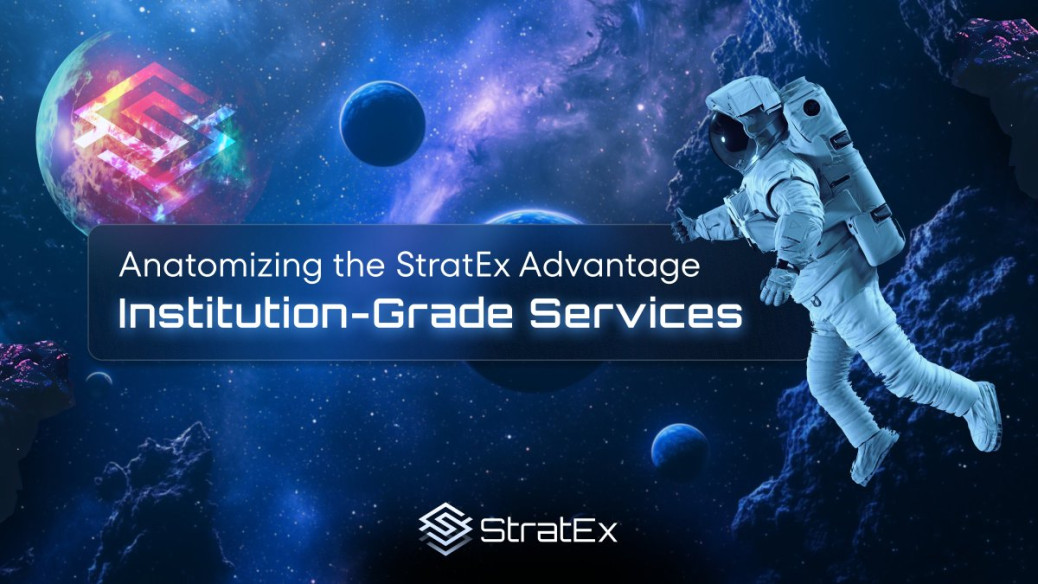Introduction to Stratex and Its Mission
Stratex has recently gained notable recognition as the winner of the Bangkok Bitangels competition, a significant event within the blockchain and cryptocurrency community. This accolade underscores the potential and innovation that Stratex brings to the decentralized finance (DeFi) landscape. The competition is known for highlighting projects that demonstrate impactful advancements in technology and investment strategies, making Stratex’s achievement a meaningful endorsement of its mission.
At its core, Stratex aims to simplify DeFi investing, which can often be complex and intimidating. The platform is designed with the intent of demystifying the intricacies involved in yield generation and asset management in the DeFi space. By focusing on providing solutions that allow users to generate passive income safely, Stratex is positioned to cater to a broader audience, including those who may not be well-versed in blockchain technology or market dynamics. This approach not only enhances accessibility to investment opportunities but also empowers users to make informed decisions about their financial futures.
The mission of Stratex revolves around establishing a reliable framework for passive income generation. By harnessing the power of smart contracts and other blockchain technologies, the platform strives to offer a suite of tools that make it easier for users to navigate the various investment options available within DeFi. Such an approach is particularly significant in a market often perceived as volatile and risky. Stratex’s innovative strategies stand out in a crowded environment, providing a competitive edge that emphasizes security, transparency, and user-friendliness.
Understanding DeFi and Its Importance in Crypto Investments
Decentralized Finance (DeFi) represents a significant shift in the financial landscape, leveraging blockchain technology to provide open and permissionless financial services. Unlike traditional financial systems that operate through intermediaries, DeFi eliminates the need for banks or brokers, enabling direct peer-to-peer transactions. This innovation democratizes access to financial services, allowing individuals across the globe to participate without the constraints of geographic or economic barriers.
One of the primary benefits of DeFi is its ability to offer enhanced accessibility. Individuals can engage in various financial activities, such as lending, borrowing, or trading, using decentralized platforms available 24/7. This continuous functionality provides a more flexible alternative to traditional finance, which often operates within standard business hours. Furthermore, DeFi systems can facilitate lower transaction fees and increased transparency, as all transactions are recorded on the blockchain, providing a secure and verifiable record.
However, investing in DeFi carries potential risks that should not be overlooked. The nascent nature of DeFi means that it often lacks regulatory oversight, making investors susceptible to volatility and potential fraud. Smart contract vulnerabilities can also pose significant threats, as programming errors can lead to the loss of funds. As such, it is crucial for investors to conduct thorough due diligence and understand the specific DeFi protocols they engage with.
In the realm of DeFi, stablecoins and Real World Asset (RWA) protocols play pivotal roles. Stablecoins offer a stable medium of exchange, reducing the volatility typically associated with cryptocurrencies. This stability is essential for users looking to maintain their purchasing power while engaging in DeFi transactions. Additionally, RWA protocols bridge the gap between traditional financial assets and decentralized systems, enabling investors to leverage real-world assets, thus generating stable returns and enhancing investor safety. The integration of these components within DeFi ecosystems reflects an evolving landscape that is gradually transforming how we perceive and engage with financial services.
How Stratex Deploys Strategies for Passive Income
Stratex has designed an innovative framework for passive income generation, particularly within the decentralized finance (DeFi) sector. By focusing on the deployment of stablecoins across diverse DeFi and Real World Asset (RWA) protocols, Stratex aims to create a low-risk environment for investors looking to earn steady returns. The foundation of their strategy lies in utilizing stablecoins, which mitigate the inherent volatility often associated with cryptocurrencies, thereby providing a safer investment avenue.
One key approach employed by Stratex is yield farming, where stablecoins are allocated to liquidity pools within DeFi platforms. These pools facilitate trading and lending, and in return, users receive rewards in the form of interest or tokens. For instance, depositing USDC or DAI into a leading DeFi exchange may yield an annual percentage rate (APR) that is significantly higher than traditional savings accounts. By strategically selecting platforms based on their stability and historical returns, Stratex capitalizes on the lucrative opportunities presented in this evolving market.
Furthermore, Stratex diversifies its investments by integrating RWA protocols. This approach connects digital assets to physical assets, such as real estate or commodities, thus providing a layer of security and stability. By leveraging these investments, Stratex adds an additional dimension to its income generation strategies, allowing users to benefit from both the crypto and real-world markets.
Testimonials from Stratex users convey a consistent satisfaction with the platform’s strategies. Many have reported experiencing substantial passive income without the need for active trading. The simplicity and effectiveness of Stratex’s methods have enabled a broader audience to participate in DeFi, underlining the platform’s commitment to accessible income generation. As the DeFi landscape continues to evolve, Stratex remains at the forefront, ensuring that its users not only minimize risk but also maximize their earning potential.
The Future of Stratex and Its Impact on the DeFi Landscape
As decentralized finance (DeFi) continues to evolve, Stratex is poised to play a pivotal role in shaping the future of this dynamic landscape. By simplifying the complexities associated with DeFi investing, Stratex opens new avenues for both novice and experienced investors seeking to navigate the digital asset ecosystem. The platform’s innovative approach not only enhances accessibility but also promotes safer investment practices within an inherently volatile sector.
One of the key opportunities for Stratex lies in its capacity to integrate advanced risk management tools. As DeFi projects proliferate, so too do the risks associated with smart contracts and liquidity pools. Stratex aims to address these concerns through a combination of robust technology and expert insights, thereby instilling greater confidence among its user base. By doing so, the company positions itself as a crucial ally for investors looking to minimize risks while still capitalizing on the potential high returns offered by decentralized financial products.
However, Stratex will face challenges that are emblematic of the broader DeFi environment. Regulatory scrutiny is increasing worldwide; as government bodies endeavor to understand and regulate the soaring crypto market, Stratex must navigate these complexities while advocating for user protection and compliance. Moreover, the platform will need to sustain its competitive edge in a rapidly changing sector, where innovation is paramount.
In the grand scheme of the DeFi landscape, Stratex’s advancements could significantly influence broader investment strategies. As investors gravitate toward solutions that offer passive income opportunities, Stratex’s model could inspire similar platforms to adopt user-friendly frameworks. The successful pursuit of such initiatives solidifies Stratex’s potential as a key player in the quest for sustainable and secure income solutions within decentralized finance, ultimately shaping the future of investment strategies in this transformative space.



